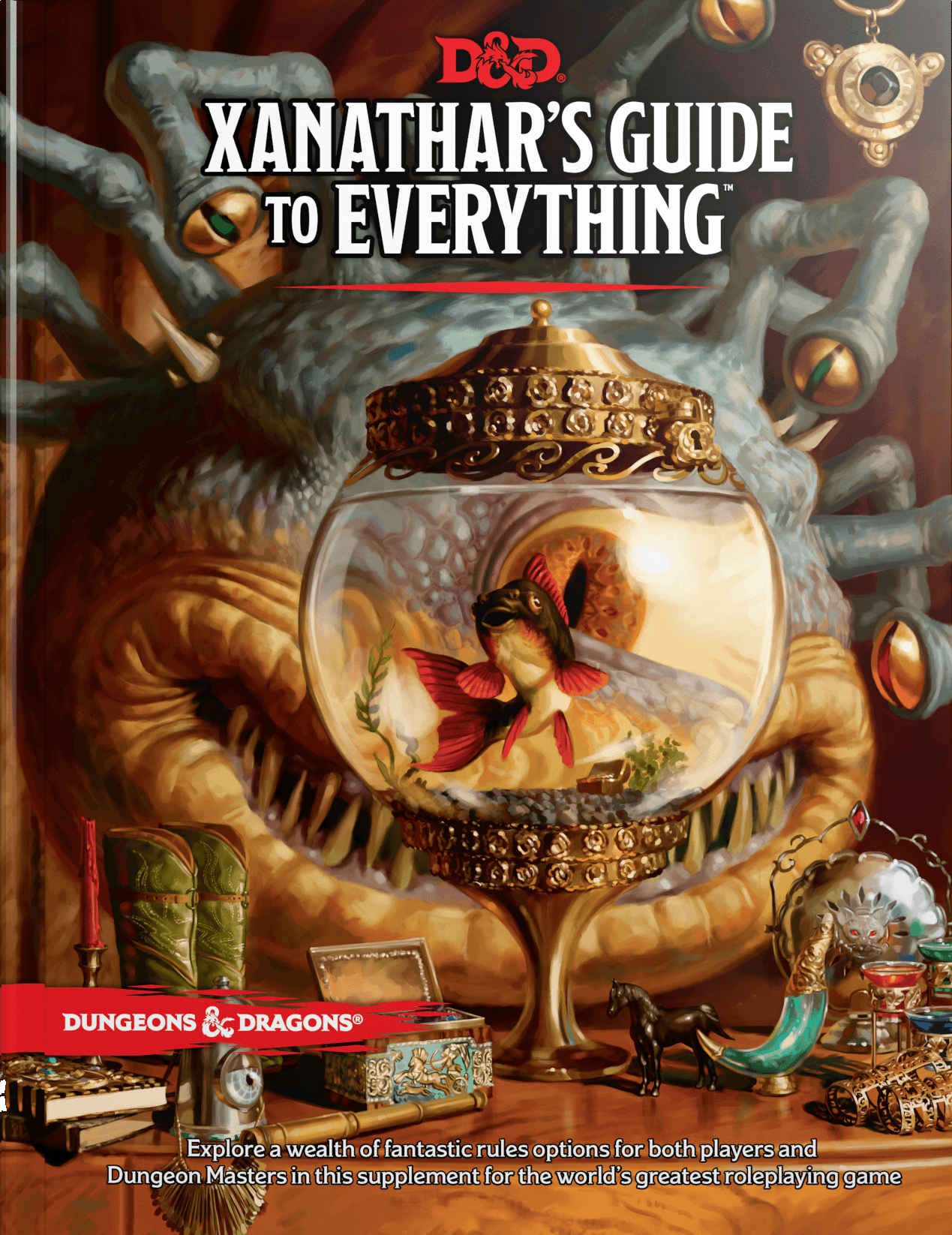Review: Play D&D? You need Xanathar’s Guide to Everything

We already have the core D&D books.
But Xanathar’s Guide to Everything is your new core book.
OK, so the book itself says you can play Dungeons & Dragons with the Player’s Handbook, Dungeon Master’s Guide and Monster Manual. That’s true.
But this book is an update and addition to, well, the entirety of D&D 5e.
Since the launch of D&D 5th edition three years ago, the D&D team has continually released Unearthed Arcana articles via its website. Those created new class options, races, spells and additional/alternate rules for playtesting.
Xanathar’s Guide is the final word on those Unearthed Arcana pieces, codifying them into official rules.
Though you don’t need this book to play, all that additional content makes Xanathar’s Guide essentially the fourth core rulebook. If you want more class options, spells or DM ideas, you need this book.
(Help support Crit For Brains by purchasing Xanathar’s Guide to Everything from Amazon.)
Presented from the perspective of a beholder crime boss living under Waterdeep, Xanathar’s Guide is broken into three sections: character options, DM tools and spells. (There’s also a pair of neat appendices.)
For the core character classes, there are 31 total new options. Every class has at least one new subclass. Most have two or three. Rogues actually get four.
S0me of them are class options that’ll be familiar from past editions and many are those that players have long wanted in 5e such as an Arcane Archer (Fighter), Monster Slayer (Ranger), Swashbuckler (Rogue) or Hexblade (Warlock).
All of them add lots of flavor and new options to 5th edition, and it’s welcome. Bards get a more weapon-focused subclass, clerics get an undead-fighter, fighters have new cavalier and samurai options, monks get three wild new options, rogues get a big expansion and wizards get the chance to be war mages.
My favorites are the cleric’s Grave Domain, the ranger’s Monster Slayer, the sorcerer’s Shadow Magic and the wizard’s War Magic.
Clerics of the Grave Domain guard the line between life and death. Characters with that subclass gets some seriously awesome healing powers, a “detect undead” feature and a curse that marks a creature for death.
Monster Slayer rangers pick out specific foes and rain down damage upon them. Sorcerers who use Shadow Magic get darkvision and can drop to 1 hit point instead of 0 with a saving throw. They also get some wild shadow powers.
War Mages get some combat casting features that let them take hits a little better with improved AC, an improved initiative feature and a feature that turns counterspells into extra damage.
My least favorite subclass is the warlock’s Hexblade. I know it was a popular class (I played one several times in 4e), but this subclass doesn’t do much to excite me. The Warlock feature Pact of the Blade from the Player’s Handbook is essentially already a hexblade.
Following the new sublcass descriptions is a fantastic little chapter called This Is Your Life, which is all about describing and roleplaying your character. In addition to the background elements presented in the Player’s Handbook, this tome gives you origin elements (parents, birthplace, family, etc.), personal decisions (why you chose your background) , class training (how you chose your class/profession), life events and two more groups of secondary tables (past adventures, boons, tragedies, wars, occupations, relationships, etc.)
There’s also two pages worth of new racial feats such as Dragon Hide for Dragonborn or Flames of Phlegethos for Tieflings.
But the best part of the book for this Dungeon Master is the one filled with new and updated rules. Many portions offer rules clarifications and small expansions. Some of it is expanding on old stuff, such as hyper-detailed entries of the various tools presented in the Player’s Handbook. A clarification I really like is the Areas of Effect on a Grid section, which details how 15-foot cones and the like work if you’re using maps and miniatures.
Possibly the best entry is the new encounter building rules, which were introduced in an Unearthed Arcana article that I’ve been using ever since. The original rules in the DMG were overly complicated, involved a lot of math and weren’t easy to fix on the fly. The new rules use challenge ratings and are based on party size and adventurer level.
Say you have 4 players at 5th level? A solo CR 7 monster would be appropriate, and four CR 2 monsters would also work. The charts make it so much easier, and the text of the section also gives a lot of ideas to add flavor to any encounter. This book is already saving me time in whipping up encounters.
It’s also followed by a host of random encounter tables. (Pages and pages of them.)
The trap rules help you design super complicated traps that use a variety of elements. Particularly devious DMs will love this section. New downtime rules are nice, but it’s not something I use that much. (That said, the item crafting section is useful.) There are several new magic items plus a handy chart on magic item rarity, type and attune (yes/no) that should have been in the DMG in the first place.
Then there’s the spells. Any spellcaster will be incredibly happy to know there are 95 new spells in this book. It’s, to my knowledge, the biggest expansion of spells yet in 5th edition.
Two appendices finish out the book. One is notes on creating and managing a shared campaign where more than one member of the group takes on the DM role and there are multiple tables or groups of players. It’s pretty great. The second appendix is all about character names, and it offers tons of first and last names for every race.






